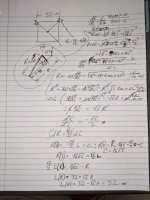TurpoUrpo
Lifetime Supporting Member
Its just basic calculation of line from point x(0),y(0) to x(1),y(1) and making small step in that line. Its pretty slow, adding more accuracy (making smaller steps) gets it very slow. I wrote it in SCL, i have not optimized it at all yet. I have some things already in mind what to do for it.







